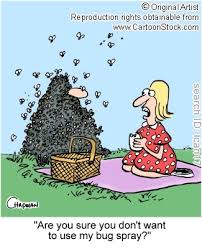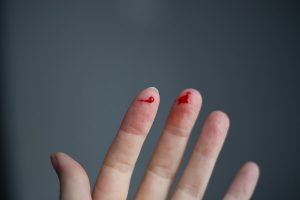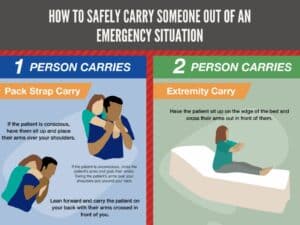My tomato plant is losing leaves along the lower stems. It’s a patterned loss and I can see where some critter has decided this plant is a wonderful smorgasbord, free for the taking. I was determined and found the culprit – a plump green horned caterpillar making its way along the underside of an unsuspecting broad leaf. Immediately, the offending consumer was plucked from his feast and transplanted far away from my poor tomato plant.
Of course, this one event brought close attention to other “bugs” active in my tomato plant’s vicinity and I soon realized that our six and eight-legged friends become very active during the summer months, just as we do. Keeping safe from their stings and bites can be a problem at times. Finding just the right way to take care of those menacing, pesky insect bites and stings is easy when bug bite first aid treatment skills are utilized.

Most insect bites are harmless but occasionally that bite or sting will include venom injected into the skin by the offending bug. This often leads to irritation which can develop further into an allergic reaction or infection. The severity of these reactions depends largely on the victim’s sensitivity to the venom (whether they’ve been stung or bitten before).
Typically, bug bites and stings are benign and the mild itching or localized swelling will disappear within a day or two. Irritation to the area will increase the likelihood of infection, so avoiding the urge to scratch or pick at the sting or bite site will make a huge difference in outcome. This isn’t easy when multiple stings or bites affect the skin – or when the victim is a child. Use of creams and ointments used topically designed to alleviate itching and irritation is a good idea after an insect bite.
More severe symptoms can include hives, swelling, nausea, difficulty breathing and abdominal pain, to name a few. When these symptoms are present, seeking the aid of a medical profession is always advised. In rare cases where the victim my exhibit symptoms of anaphylaxis (severe, life-threatening allergy often seen with difficulty breathing, dizziness, etc.), immediate attention is required and the 9-1-1 call for emergency help is appropriate.
Bites from bees, wasps, hornets, yellow jackets and fire ants are typically the most troublesome. Bites from mosquitoes, ticks, biting flies, ants, scorpions and some spiders also can cause reactions. Scorpion and ant bites can be very severe. Although rare, some insects also carry disease such as West Nile virus or Lyme disease. (MayoClinic)
Bug Bite First Aid Treatment
While most people will not suffer a severe reaction to insect bites and stings, knowing what to do in the event of a reaction is important. The Mayo Clinic suggests bug bite first aid treatment taken for simple bites and stings without symptoms of a more severe reaction:
- Move to a safe area to avoid more stings.
- Remove the stinger, especially if it’s stuck in your skin. This will prevent the release of more venom. Wash the area with soap and water.
- Apply a cold pack or cloth filled with ice to reduce pain and swelling.
- Try a pain reliever, such as ibuprofen (Advil, Motrin, others) or acetaminophen (Tylenol, others), to ease pain from bites or stings.
- Apply a topical cream to ease pain and provide itch relief. Creams containing ingredients such as hydrocortisone, lidocaine or pramoxine may help control pain. Other creams, such as calamine lotion or those containing colloidal oatmeal or baking soda, can help soothe itchy skin.
- Take an antihistamine containing diphenhydramine – Benadryl. (MayoClinic)
Following these simple guidelines can help alleviate the “sting” of summer insect bites. SureFire CPR can help you learn the skills for bug bite first aid treatment, CPR certification, and more when the unwelcome insect takes a “bite” out of summertime fun.










